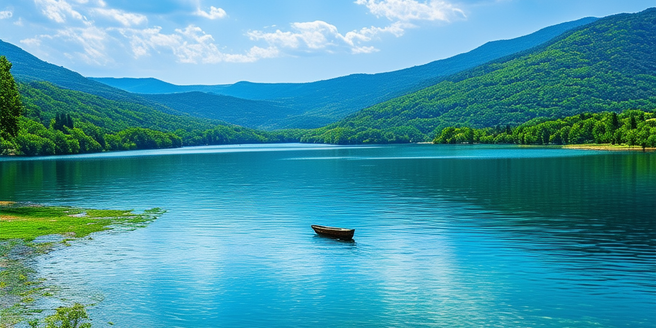
The Evolution of Water Conservation Policies
Water conservation policies have evolved significantly over the years, starting from basic regulatory measures to complex integrated management strategies. Initially, policies were developed in response to immediate crises such as droughts and water shortages. Over time, as awareness of environmental issues grew, these policies began to incorporate sustainable practices and long-term planning. Key legislative milestones, such as the Clean Water Act, set precedents for future policy development. Technological advancements and a better understanding of ecological impacts have also guided these evolutions, promoting more holistic approaches. Globally, countries have observed each other’s regulatory frameworks, adopting and adapting measures that suit their unique environmental and social contexts. This dynamic evolution reflects an ongoing commitment to securing water resources for future generations, while acknowledging past lessons and shifting priorities.
Key Players in Water Policy Development
The development of water policies is shaped by a diverse group of stakeholders, each playing a critical role in shaping effective strategies. Governments and regulatory bodies set the legislative framework and enforce compliance, while non-governmental organizations (NGOs) advocate for sustainable practices and raise public awareness. Scientists and researchers contribute essential data and analysis to guide evidence-based policymaking. The private sector, including industries with significant water footprints, are increasingly involved, driven by both regulatory compliance and corporate social responsibility. Local communities and indigenous groups provide invaluable insights and traditional knowledge, often advocating for culturally sensitive approaches. International bodies, such as the United Nations, facilitate global cooperation and set international standards and goals. These key players must collaborate, balancing diverse interests and expertise, to develop and implement policies that effectively manage water resources and address global challenges.
Evaluating the Effectiveness of Current Policies
Evaluating the effectiveness of current water conservation policies is crucial to understanding their impact and identifying areas for improvement. Various tools and metrics are employed to assess outcomes, such as water quality indices, usage efficiency, and ecological health indicators. Regular audits and assessments help determine whether goals are being met, and adaptive management strategies are crucial to respond to changing conditions. Stakeholder feedback, including input from local communities and industry, provides valuable insights into the real-world impact of policies. Comparative studies across different regions and countries also offer lessons learned and best practices. Challenges in evaluation often stem from insufficient data and monitoring resources, underscoring the need for robust information systems. Continuous evaluation ensures that policies remain relevant, effective, and capable of addressing emerging threats to water security.
Challenges Faced in Policy Implementation
Implementing water conservation policies presents various challenges that can impede their success. Limited financial resources often restrict the execution of comprehensive strategies, leading to inadequate infrastructure and capacity building. Political and institutional barriers, such as lack of coordination and conflicting interests among stakeholders, can hinder effective policy deployment. Social and cultural factors also play a role, with resistance to change sometimes stemming from insufficient public engagement and awareness. Technological limitations and data availability can further complicate implementation, making it difficult to monitor and evaluate progress. Addressing these challenges requires a collaborative approach, integrating diverse perspectives and expertise. Additionally, policies must be adaptable to local contexts, ensuring that they are practical and relevant. By overcoming these obstacles, there is a greater chance for successful implementation and achievement of water conservation goals.
Case Studies: Successful Water Conservation Models
Examining successful case studies provides valuable insights into effective water conservation practices. One notable example is Singapore, which has implemented a comprehensive approach combining technology, infrastructure, and public education to achieve water sustainability. The country’s national water agency, PUB, has developed innovative solutions such as desalination, water reuse, and catchment management. Another successful model is Israel, where precision irrigation and advanced water recycling techniques have maximized agricultural efficiency and reduced wastage. In the Netherlands, integrated water management strategies address both supply and flood risk, leveraging an extensive system of dikes and canals. These case studies highlight the importance of tailored approaches, strong governance, and community involvement. They demonstrate that with the right combination of policies, technology, and commitment, significant progress can be made toward sustainable water management.
Future Directions for Water Conservation Efforts
As water scarcity looms as a critical global issue, future directions for water conservation must focus on innovation and collaboration. Emphasis will likely shift toward integrated water resource management, which balances demand with available supply and ecological sustainability. Technological advancements, such as smart sensors and data analytics, will play a vital role in optimizing usage and detecting inefficiencies. Greater collaboration among governments, communities, and private sectors is essential for creating cohesive strategies and sharing best practices. Investment in education and public awareness campaigns will empower individuals and organizations to make informed decisions regarding water use. Additionally, international cooperation and policy harmonization can address transboundary water issues, ensuring equitable and sustainable management. By embracing these future directions, we can pave the way for long-term water security and resilience against climate change impacts.
